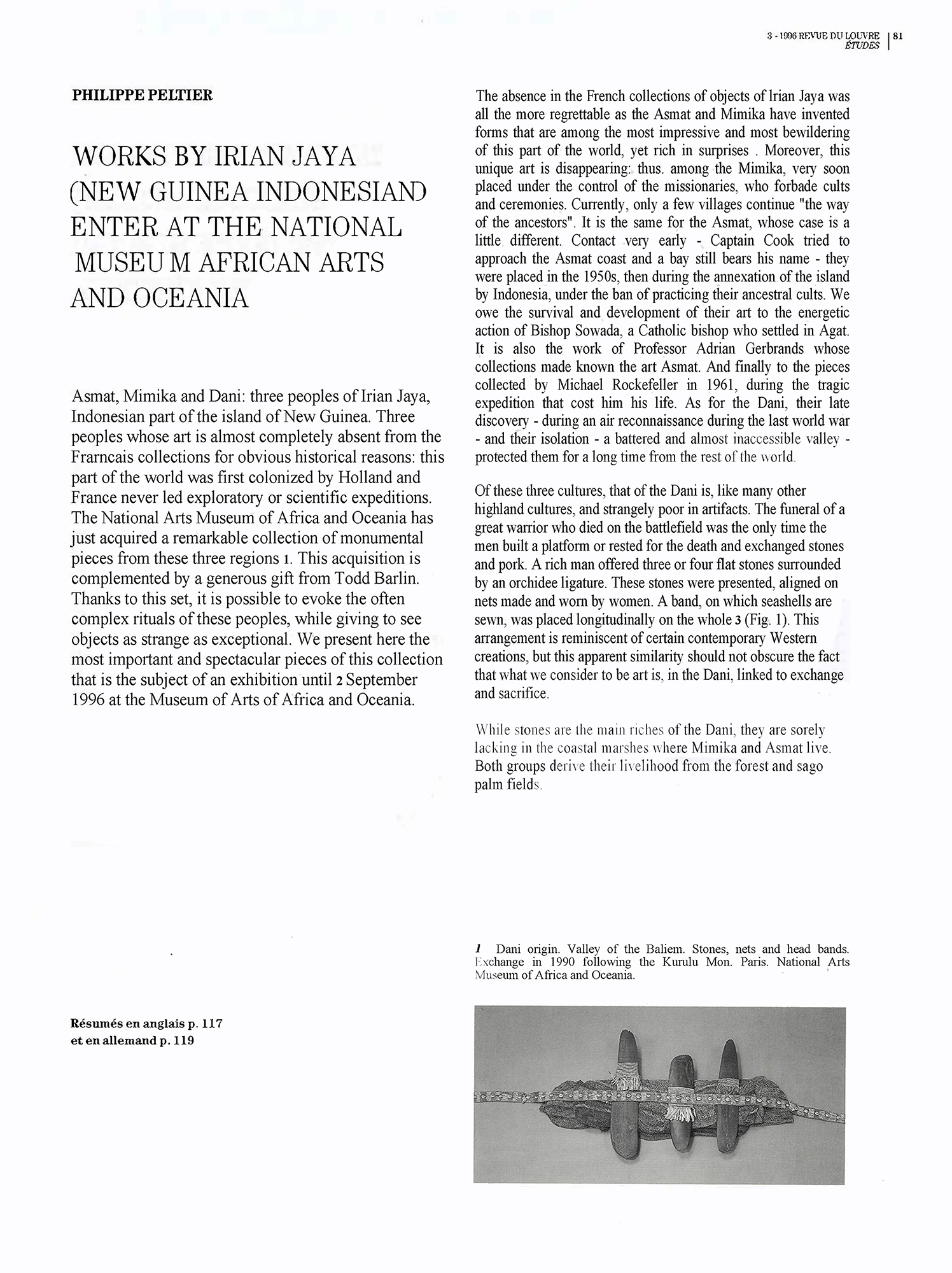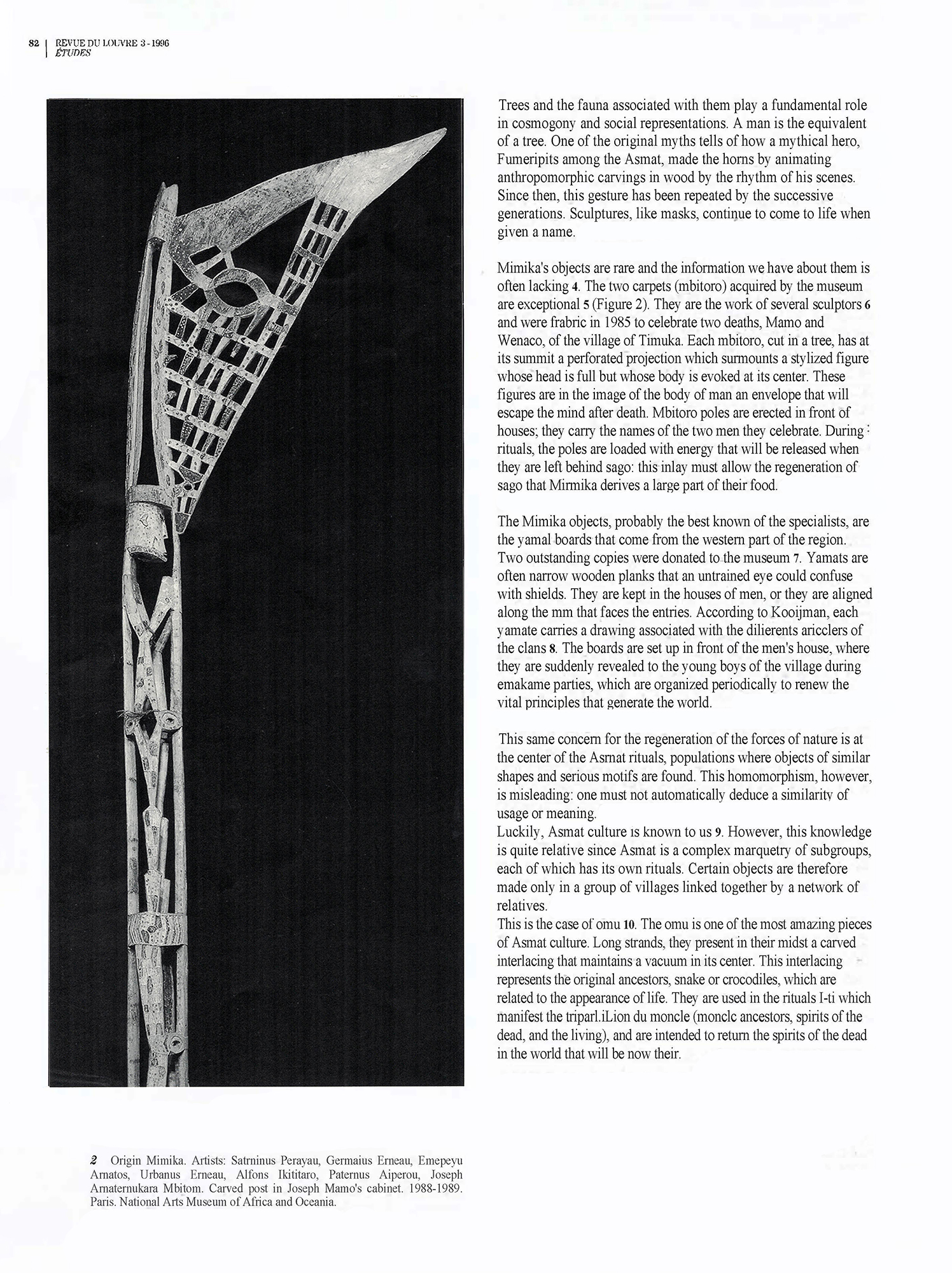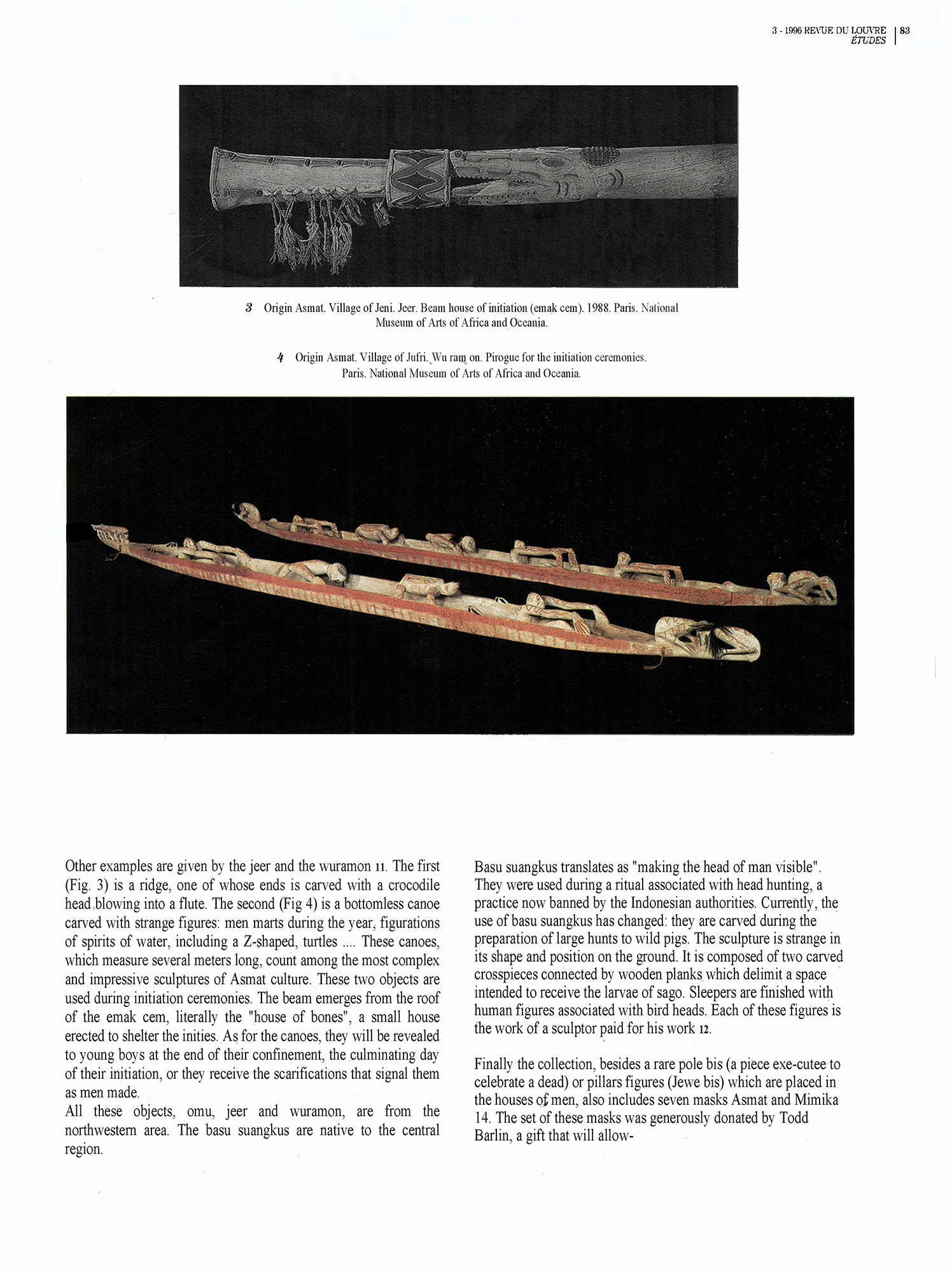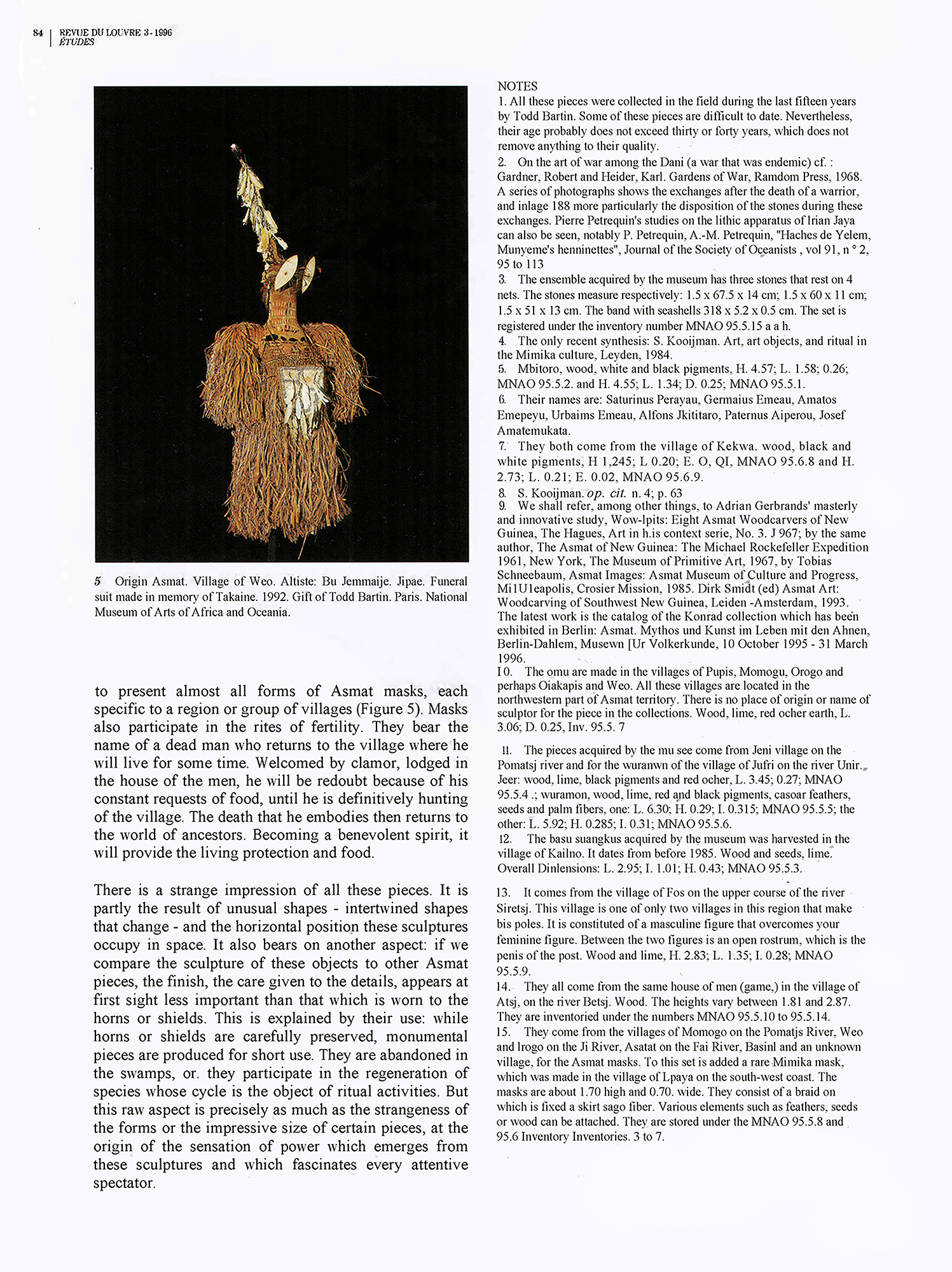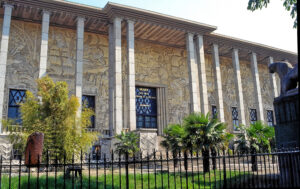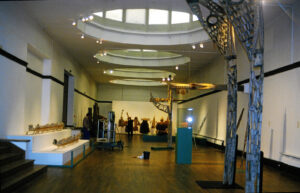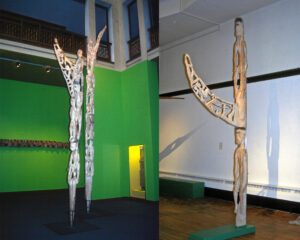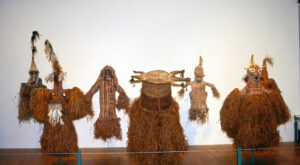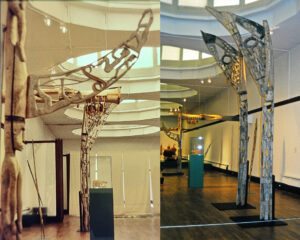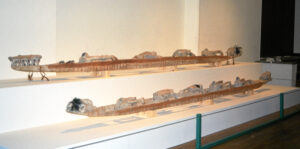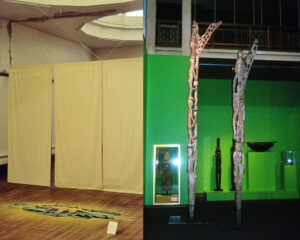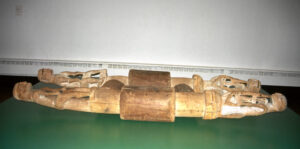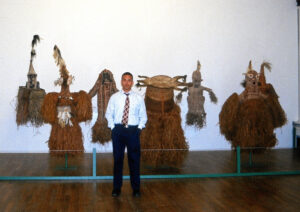A Superb Old Australia Aboriginal Shield Bardi People Dampier Peninsula in the Kimberley region of Western Australia
This finely carved shield with a rare geometric & herringbone design on the front and was coated with ceremonial red ochre, the back has incised linear striations in horizontal bands. The deep lug handle and entire shield has an old dry patina. 19th to early 20th Century.
Shields are one of the most beautiful objects made by the indigenous people in Australia. This finely carved shield has the same design elements on both the front and the back, the incised design consists of horizontal bands of vertical striations and then followed by a band of wavy lines this is repeated from the top to the bottom of the shield to beautiful effect.
The role of shields in tribal culture is to provide personal defense against blows and missiles; also, importantly shields serve to reflect an image of power, identity, and tribal group. Each tribal group has different design elements on their shields which instantly make them identifiable to other tribes.
Reference: Interlocking Key Design in Aboriginal Australian Decorative Art. Dr. D. S. Davidson First published: September 1949
Provenance: The Todd Barlin Collection of New Guinea Oceanic Art
See my new EXHIBITIONS GALLERY showing the Museums and Art Galleries Exhibitions that I provided artworks for over the past 40 years. There is the link to the article about my artworks published in the prestigious Louvre Magazine in 1996
I have artwork for Museums and art Galleries but also for collectors at every stage of their collecting. I want to encourage people to explore the fine art of New Guinea & West Papua and the Pacific Islands and to be able to see and touch the artworks in a relaxed and friendly manner in my Sydney Gallery. I would like to invite you to visit my gallery and see the artworks in person and also look at my website www.oceanicartsaustralia.com where there are many Galleries & Sub Galleries to explore.
My Gallery of nearly 40 years is the last physical gallery in Sydney that specializes in New Guinea and Oceanic Art. Sydney is very close to New Guinea & the Pacific Islands where all of these amazing artworks came from, Australia’s closest neighbors.
To see many more rare items and the finest masterpieces, please make an appointment with us to visit the gallery.
For all inquiries, please contact us

